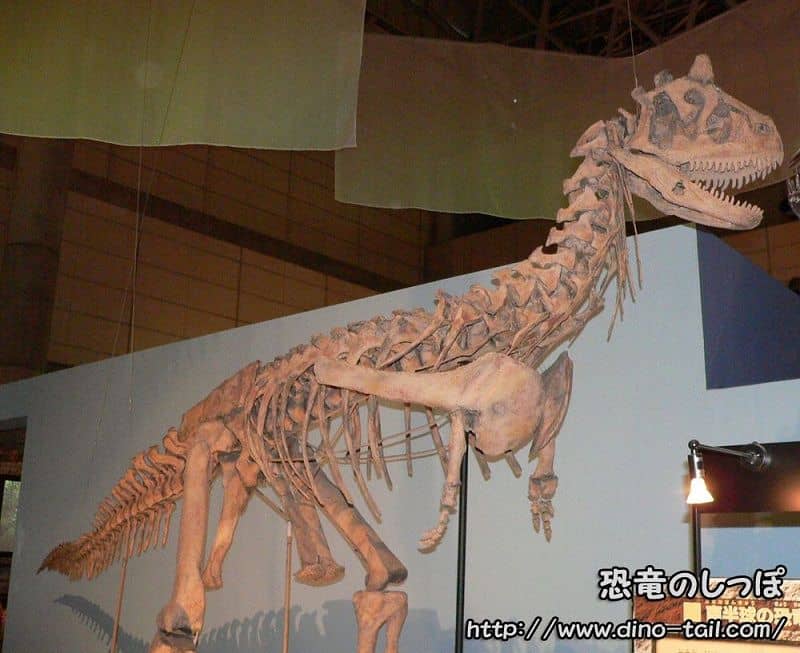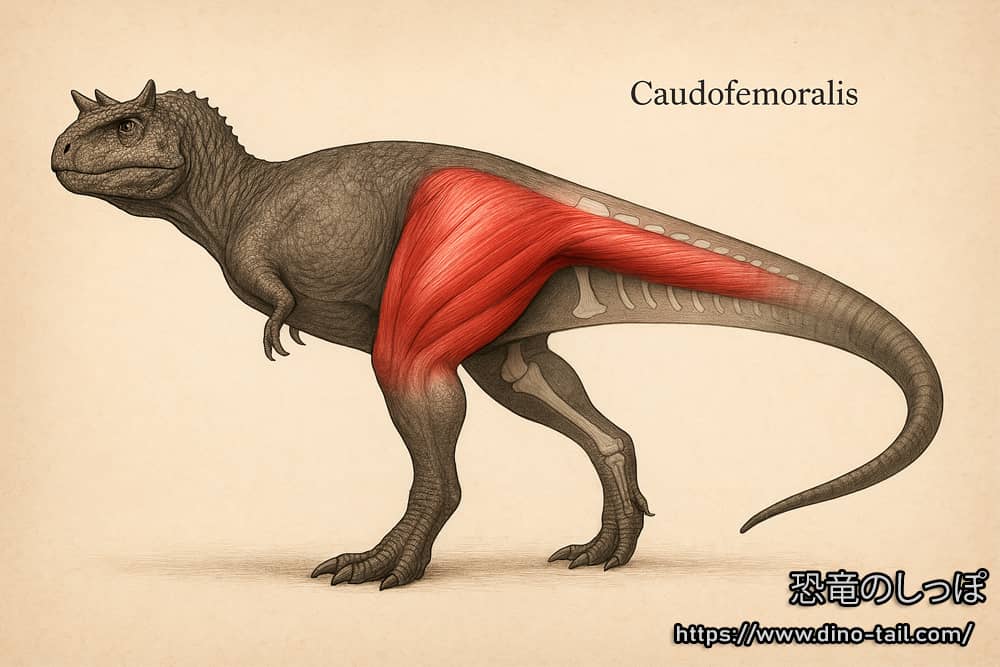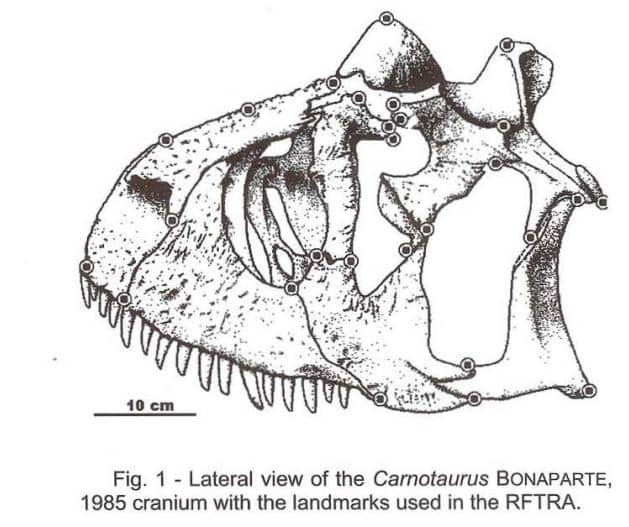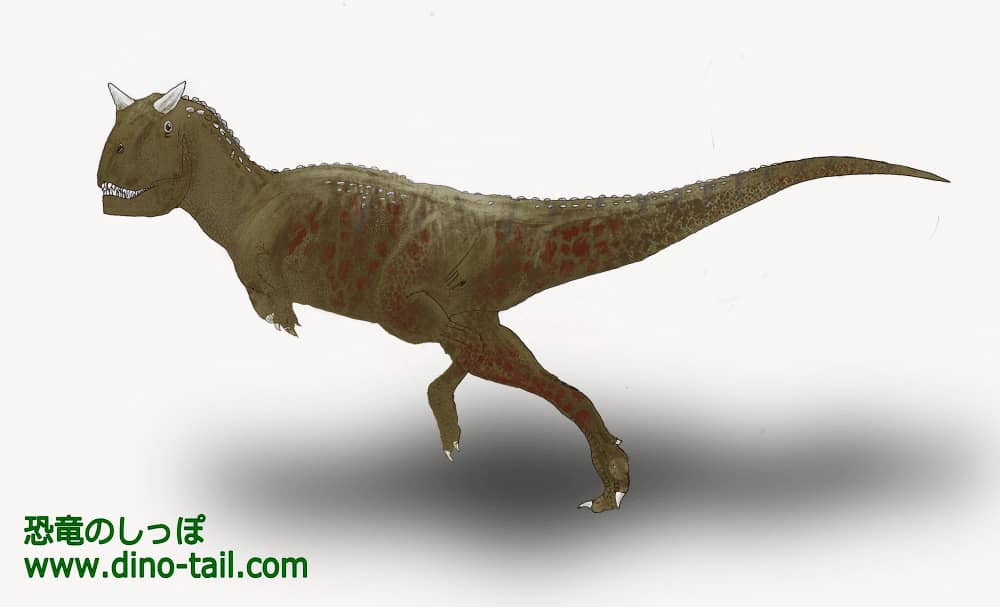About Carnotaurus
| Scientific Name (Genus) | Carnotaurus |
| Meaning of Name |
Meat-eating bull
carō (meat) [Latin] - taurus (bull) [Latin] |
| Classification | Saurischia, Theropoda (Ceratosauria) |
| Total Length | Approx. 8m |
| Diet | Carnivorous |
| Period | Late Cretaceous (approx. 72-69.9 million years ago) |
| Species | Carnotaurus sastrei |
| Year of Paper Publication | 1985 |
| Genus Name Publication | Bonaparte, José F. (1985). A horned Cretaceous carnosaur from Patagonia. National Geographic Research, 1. |
Characteristics

Carnotaurus lived in South America during the Late Cretaceous (about 72-69.9 million years ago). It is estimated to have been about 8 meters long and weighed 1 ton.
It is characterized by large, conical horns above its eyes and very short arms. The purpose of the horns is not well understood, but they may have been used as weapons for predation, in territorial disputes among rivals, or to indicate sexual dimorphism.
Compared to other theropods, its skull had a shorter jaw. Despite its shortness, it was tall and robust, but in contrast, the lower jaw was slender, creating a somewhat unbalanced impression.
While the skull of Carnotaurus was tall and sturdy, its lower jaw bone was relatively delicate, and its bite force is estimated to have been less powerful than that of Tyrannosaurus. So, how did it hunt its prey?
One theory suggests that instead of using a powerful bite to hold down prey, it used its speed to charge at its target and swung its head down like an axe to inflict deep wounds, a hunting style known as a 'hatchet attack'. Another theory, based on its wide gape, is that it swallowed smaller prey whole. Its extremely short arms were useless for grasping prey, so it likely developed a unique hunting style that maximized the use of its head, jaws, and impressive speed.
Stereoscopic Vision: The eyes of Carnotaurus were more forward-facing than those of many other theropods. This is thought to have enabled 'stereoscopic vision,' allowing it to accurately judge distances to its prey. This was a significant advantage for a hunter that pursued its quarry at high speeds.
Its forelimbs (arms) with four fingers were extremely short and vestigial, much shorter than those of Tyrannosaurus. They were so short that they are thought to have been non-functional.
Skin impressions have also been found, revealing that it had bumpy skin containing small osteoderms.
The Swift Runner of the Cretaceous

A particularly noteworthy aspect of Carnotaurus research is its exceptional running ability. Fossils show that the 'caudofemoralis' muscle, which connects the base of the tail to the hind limbs, was significantly larger than in other theropods. This muscle was responsible for powerfully pulling the thigh backward during walking and running.
Thanks to this muscle, which can be thought of as a massive engine, Carnotaurus is believed to have been capable of explosive bursts of speed when chasing prey. While other large theropods like Tyrannosaurus were power-based hunters utilizing their immense size, Carnotaurus may have been a speed-based hunter that sprinted across the plains of South America.
Discovery and Publication

Source: Mazzetta, Gerardo V.; Fariña, Richard A.; Vizcaíno, Sergio F. (1998). On the palaeobiology of the South American horned theropod Carnotaurus sastrei Bonaparte.
In 1984, an expedition led by Argentine paleontologist José Bonaparte in Chubut, Argentina, discovered the back two-thirds of a tail, lower leg bones, a weathered hind foot, and a skull. The fossils were embedded in extremely hard rock, and their preparation reportedly took a long time.
The following year, in 1985, José Bonaparte described the new genus and species Carnotaurus sastrei in his paper, "A horned Cretaceous carnosaur from Patagonia."
The original holotype fossil (specimen number MACN-CH 894) is housed and displayed at the Argentine Museum of Natural Sciences. Replica specimens can be seen in many museums.

